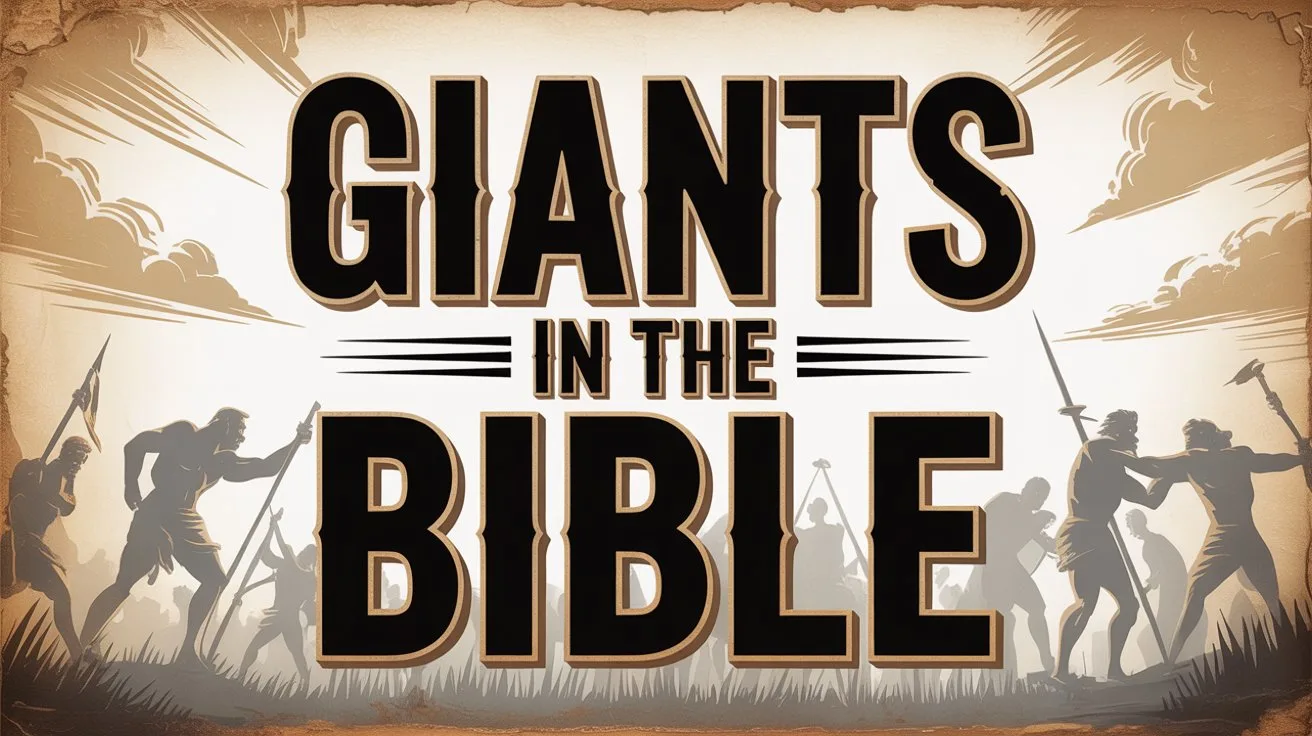The Bible references several groups and individuals described as giants. These beings are often associated with opposition to God’s people and are depicted as formidable adversaries. This study will examine the tribes identified as giants, named individuals, and other figures who may have been giants, based solely on scriptural evidence.
Tribes of Giants
Nephilim: The Nephilim are first mentioned in Genesis 6:4:
“There were giants on the earth in those days, and also afterward, when the sons of God came in to the daughters of men and they bore children to them. Those were the mighty men who were of old, men of renown.”
The term “giants” here translates the Hebrew word “Nephilim.” They are also referenced in Numbers 13:33, where the Israelite spies describe the inhabitants of Canaan:
“There we saw the giants (the descendants of Anak came from the giants); and we were like grasshoppers in our own sight, and so we were in their sight.”
Anakim: Descendants of Anak, the Anakim are described as a formidable people. Deuteronomy 9:2 states:
“A people great and tall, the descendants of the Anakim, whom you know, and of whom you heard it said, ‘Who can stand before the descendants of Anak?’”
Joshua 11:21-22 notes their presence in the hill country and their eventual defeat by Joshua.
Rephaim: The Rephaim are mentioned in several passages. Deuteronomy 2:11 equates them with the Anakim:
“They were also regarded as giants, like the Anakim, but the Moabites call them Emim.”
Og, king of Bashan, is identified as the last of the Rephaim in Deuteronomy 3:11.
Emim: The Emim are described in Deuteronomy 2:10-11 as a people great and numerous, tall like the Anakim, and regarded as giants.
Zamzummim: Also known as the Zuzim, they are mentioned in Deuteronomy 2:20-21 as a people great and numerous, tall like the Anakim, and regarded as giants by the Ammonites.
Amorites: Amos 2:9 describes the Amorites:
“Yet it was I who destroyed the Amorite before them, whose height was like the height of the cedars, and he was as strong as the oaks.”
This suggests that some Amorites were of great stature.
Named Giants
Goliath: Perhaps the most famous giant, Goliath is described in 1 Samuel 17:4 as a champion from Gath, whose height was six cubits and a span. His defeat by David is a well-known account.
Og, King of Bashan: Deuteronomy 3:11 states:
“For only Og king of Bashan remained of the remnant of the giants. Indeed his bedstead was an iron bedstead… nine cubits is its length and four cubits its width.”
This suggests his significant size.
Ishbi-Benob: Mentioned in 2 Samuel 21:16 as a descendant of the giants, he attempted to kill David but was slain by Abishai.
Saph (Sippai): Referred to in 2 Samuel 21:18 and 1 Chronicles 20:4 as another descendant of the giants, killed by Sibbechai the Hushathite.
Lahmi: Identified in 1 Chronicles 20:5 as the brother of Goliath, slain by Elhanan.
Unnamed Giant: 2 Samuel 21:20 describes a man of great stature from Gath, with six fingers on each hand and six toes on each foot, who was killed by Jonathan, David’s nephew.
Possible Giants
Nimrod: Genesis 10:8-9 describes Nimrod as:
“Cush begot Nimrod; he began to be a mighty one on the earth. He was a mighty hunter before the Lord.”
The term “mighty one” translates the Hebrew word “gibbor,” which can denote a person of great strength or stature. Some traditions and interpretations suggest that Nimrod may have been a giant or had associations with the Nephilim. However, the Bible does not explicitly state that Nimrod was a giant.
Arba: Joshua 14:15 refers to Arba as the greatest man among the Anakim, and the father of Anak. While not explicitly called a giant, his association with the Anakim suggests he was of great stature.
Sheshai, Ahiman, and Talmai: These sons of Anak are mentioned in Numbers 13:22 and Joshua 15:14. Their lineage implies they were of significant size.
Egyptian Warrior: 1 Chronicles 11:23 describes an Egyptian man of great height, five cubits tall, who was slain by Benaiah, one of David’s mighty men.
My Final Thoughts
The Bible provides several accounts of giants, both in terms of tribes and individuals. These beings often stood in opposition to God’s people and were ultimately defeated, demons/”>demonstrating God’s power and faithfulness. While some details are sparse, the consistent references across various books underscore their significance in biblical history.





 Get the book that teaches you how to evangelize and disarm doctrines from every single major cult group today.
Get the book that teaches you how to evangelize and disarm doctrines from every single major cult group today.